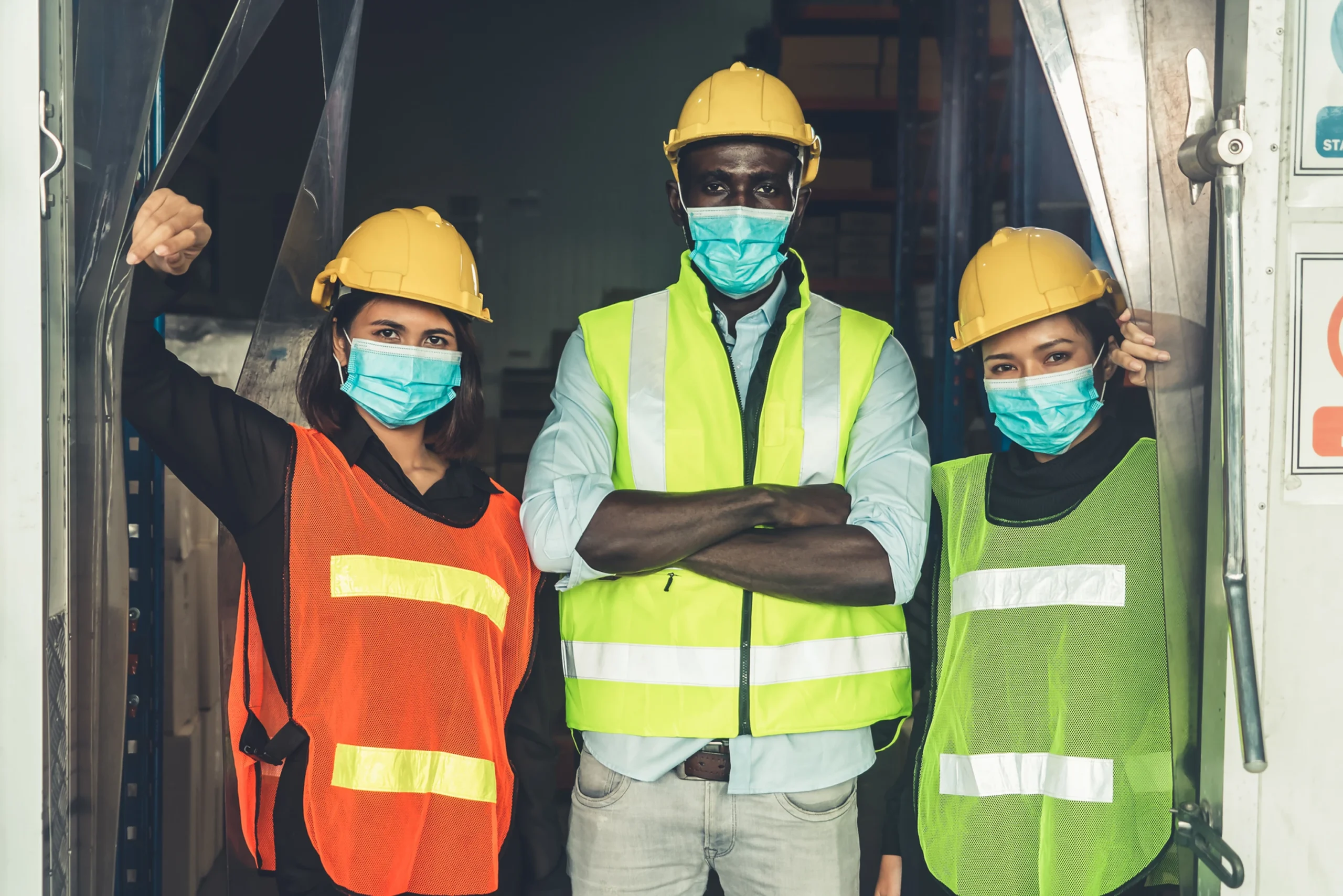
Summary
Successful retrofit of a mask producing machine to also package masks at a specific rate and with minimal rejects.
Location: Confidential
Product: Automated mask packer
Industry: Manufacturing, Biomedical, Surgical Masks
Timeframe: 6 months
Background
The customer purchased a mask manufacturing machine which took raw mask material and produced masks at a rate of 100 parts per minute. The manufacturing machine did not include a packaging line and finished masks were simply dropped into a bin to be sorted and packaged manually. The customer purchased a box erector system which automatically folded boxes to allow for packaging but did not have a packaging solution. DAPR partnered with the customer to integrate the existing manufacturing machine and box erector machine with a new packaging line. The first part of the packaging line took boxes created by the box erector and positioned them underneath one of two mask plungers. The second part of the machine handled the masks themselves. Masks came off the existing equipment between a pinch belt conveyor system. DAPR adopted the pinch belt system and added an additional conveyor section to transfer the parts onto the packaging line. Once the masks had entered the packaging line, two skew detect sensors determined the angle at which the mask sat on the pinch belt. If the angle was determined to be too great to allow for proper packaging, the mask was rejected. If the angle was under the limit, masks were packaged into one of the boxes below. One station operated at a time so that once one box was filled, the second would start to be packaged to allow for time to unload the full box and load a new empty box. The requirement was to package 50 masks per box such that the end user could remove a single mask without disturbing others in the box, at a rate of 100 masks per minute.
Challenges & Solutions
- Timing and triggering of the servo plunger were challenges that required process and software refinements that included sensor placement, sensor response time, digital input response time, and servo move profile.
- Skew sensor timing was also a challenge as only a few milliseconds separated a ‘good mask’ vs a ‘bad mask’.
- It was critical that the masks traveled square off the manufacturing machine to the DAPR packaging machine. Setup was critical in that one side was not ‘pinched’ more heavily than the other which would induce skew. DAPR incorporated a rotary encoder to track the speed of the manufacturing machine. Through testing it was found the best results came from setting the packaging line speed slightly higher than that of the manufacturing machine so that a small amount of force was put into the masks as they entered the packaging line.
- The mask producing machine was German made and did not have onsite support when DAPR was integrating the machines together. DAPR spent several days helping our customer adjust the equipment to enable a clean handoff between machines.
- Language barriers and miscommunication with the German company led to misunderstanding about how the handoff between machines would be handled (i.e. communication of upstream rejects, line speed) and who was responsible for components associated with these. We were able to accommodate these issues by incorporating last-minute design changes and on-site troubleshooting and debugging of the mask producing machine.
- The servo plunger was another pain point. As the mask was plunged into the box, head ties could wrap around the end of arm tooling. Necessary modifications needed to be made to mitigate this. 3D printed parts allowed the head tie to fall to the side rather than getting caught in the end of arm tooling.
- Boxes coming from the box erector were not perfectly square. This was a concern for successful packaging of the masks downstream. It was also problematic for box conveyance. Both challenges were tackled by implementing rails, tamping devices, and escapements to ensure boxes were squared up at critical transition and process locations.
